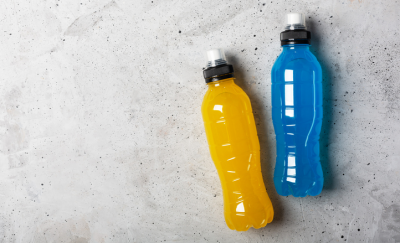Demand driver: Satisfying Gen Y’s appetite for premium sports and active nutrition products key to sector growth – Growth Asia Summit

The pandemic, rising awareness about health and wellness, and greater accessibility due to the e-commerce boom are some of the factors said to be stimulating development of the sports and active nutrition category in Asia-Pacific (APAC).
According to Tim Hill, Key Accounts Director (South East Asia) at GlobalData, APAC’s sports and active nutrition sector was valued at USD4.2 billion in 2022, and is projected to grow at a CAGR of 7.6% to reach USD6.1bn in 2027.
Speaking at the recent Growth Asia Summit, Hill highlighted key trends, shifts in consumption patterns, as well as challenges and growth potential of the industry.
Based on GlobalData’s 2022 Q4 consumer survey, consumers in Asia, especially China and Middle East, were most keen to pay more for “unique products that offer something new or different”.
“More than 57% of Chinese consumers and over 20% of Saudi Arabian consumers were willing to trade up to higher-value sports and active nutrition products. Among them, Gen Y consumers are driving the demand, particularly female millennials in China and Vietnam.
“In India, though Gen Y females (39%) are escalating demand for higher-value products, boomer-aged males (29%) have also expressed interest for such offerings.”
Furthermore, D2C online sales channels were found to be most popular with younger consumers aged between 18 and 24 years, whereas more than two-thirds of consumers aged 65 years and above preferred purchasing from physical stores.
“In APAC, 59% of consumers buy from supermarkets, 46% from online D2C, 36% via e-commerce, 22% from pharmacies, and 20% from gyms. Therefore, brands need to target a range of ages in store, but can stick to a younger demographic for their online sales.”
In addition, the results showed that Indian consumers buy from the largest range of channels and are most likely to purchase from an e-commerce site (51%), while Chinese consumers are most inclined to buy online directly from the brand (61%).
New vs existing consumers
Exercise was identified as the biggest motivator for consumers to increase their spending on sports and active nutrition products.
However, the drivers for consumers who just started exercising more frequently are markedly different from those of existing consumers.
“45% of new consumers are more likely to buy sports and active nutrition products, compared to 35% of existing consumers, who have a wider variety of needs. For example, they are more interested in improving their performance.
“This means that brands looking to reach new consumers need to market in places where consumers are embarking on new workout regimes, such as beginners’ clubs or during the January gym rush. On the flip side, brands who wish to attract existing consumers should emphasise product functions, such as performance-lifting energy bars,” Hill shared.
Additionally, new consumers have a propensity for buying online, before gravitating towards physical stores.
“The share of long-term consumers who buy online directly from brands is 11% lower than new consumers. Online research by prospective consumers more readily translates into sales, while existing consumers may find better value-for-money options in supermarkets.
“This is crucial for e-retailers as the market saturates and the share of new customers shrinks. Brands that rely on online sales must find ways to make their products and the shopping experience superior.”
Moreover, older consumers tend to use active nutrition for a boost of energy.
In fact, 37% of respondents aged 65 and above said that they bought sports and active nutrition products “because they are a more convenient source of energy”.
“This points to an untapped market of older consumers who may not relate to overly sporty packaging and youthful branding. If products suitable for this demographic were presented differently, there could be significant growth in this consumer group.”
Challenges and opportunities
One of the biggest challenges for the sports and active nutrition sector is ensuring product safety and quality.
“With more manufacturers and suppliers entering the market, there is a need for strict regulation and oversight to prevent the sale of contaminated or unsafe products. The use of banned or prohibited substances in sports supplements is a concern, as these can have serious health consequences for athletes and fitness enthusiasts.”
Although industry organisations and regulatory bodies have developed guidelines and standards for the manufacturing, labelling and distribution of sports supplements, Hill believes there is still a need for consumer education on the risks associated with untested or unregulated products.
“Industry players must continue to prioritise safety and quality control to maintain the trust of and avert harm to consumers, regardless of their income level or location.”
Accessibility and affordability is another area that needs to be addressed through “greater innovation and collaboration” across the sector.
“Some companies are exploring new distribution channels and pricing strategies, such as subscription services or bulk discounts, to lower the cost of their products, while others are partnering with retailers and distributors to reach a wider audience.”
As consumers are increasingly conscious of ingredients and labels, the demand for products with claims such as vegan, plant-based, gluten-free and low-sugar is expected to persist.
At the same time, sustainability remains a major topic of consideration, especially when it comes to packaging.
“Consumers are looking for eco-friendly packaging to reduce waste. As a result, brands are investing in sustainable packaging options to entice consumers. Small and convenient packaging is also popular, as it allows for consumption on the go.
“New packaging formats and designs, along with value-added packaging features that improve the user experience, will continue to be a focus area for manufacturers.”
Beyond performance-boosting functions, there has also been heightening awareness of the importance of the gut microbiome in supporting immunity and many other aspects of health.
This has led to a spike in demand for ingredients such as prebiotics and botanicals.
“Brands have started incorporating pre- and probiotics in gummy supplements, nutrition bars, hydration beverages, and stick packs etc. More companies will likely be launching new variants of sports and active nutrition products in the future,” Hill concluded.



















